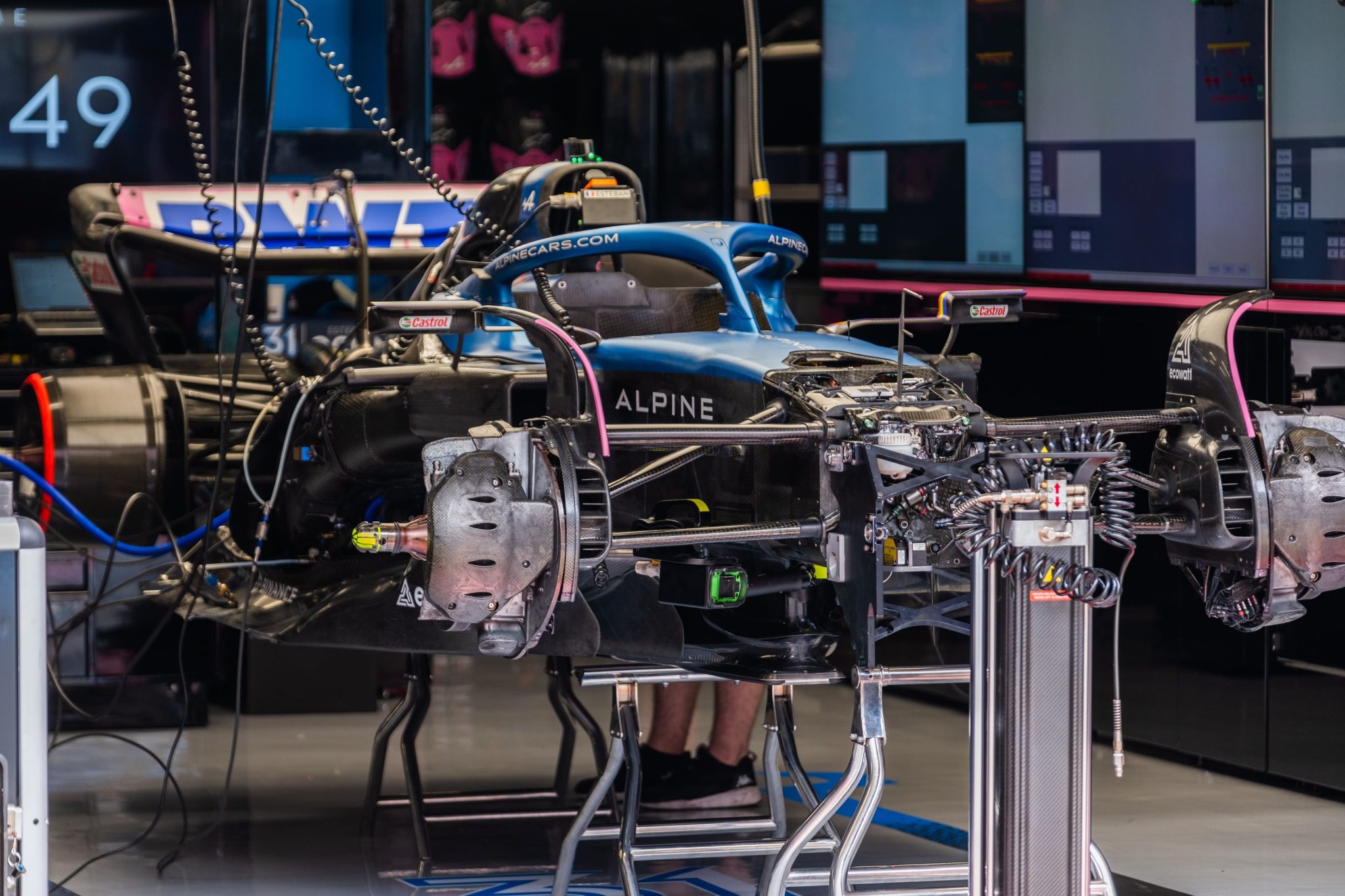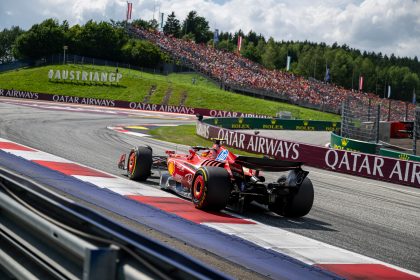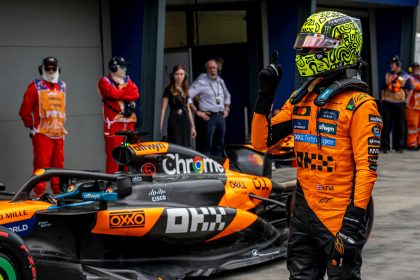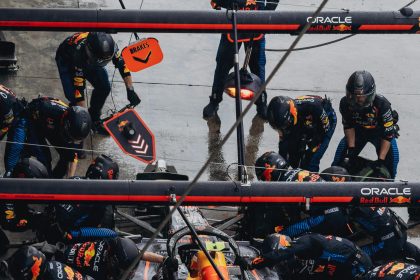“Why Did My Favorite Driver Start P18?!” – The Grid Drop Drama Explained
If you’ve ever woken up on a Sunday, made your pre-race pizza, and then screamed at the TV because your favorite driver is starting somewhere near the car park, you’ve probably been a victim of the infamous F1 engine and gearbox penalty system. It’s the most complicated math since your high school calculus exam, and it’s been the source of more fan rage than a Ferrari pit stop blunder.
- “Why Did My Favorite Driver Start P18?!” – The Grid Drop Drama Explained
- The Anatomy of an F1 Power Unit & Gearbox: Not Your Dad’s V8
- The 2025 Rules: How Many Parts Can You Use Before the FIA Brings the Hammer?
- How the Penalties Are Calculated: The FIA’s Grid Drop Bingo
- Gearbox Penalties: Five-Place Grid Drop, Five Times the Rage
- Why So Harsh? The FIA’s Master Plan (Or, Why We Can’t Have Nice Things)
- The “Back of the Grid” Party: When Everyone Gets Penalized
- The Human Side: When Penalties Break Hearts (and Championships)
- The Engineering Game: Why Teams Still Try to “Game” the System
- The Fans’ Verdict: Love It, Hate It, or Just Meme It?
- TikTok Take: The Penalty System in 30 Seconds
- The Buzz Online
- Final Lap: My Hot Take
But how does it actually work? Why do teams get punished for swapping out a gearbox or engine? And why does it always seem to hit just when your fantasy team is finally looking good? Buckle up, because we’re about to break down the juiciest, most controversial, and meme-worthy system in Formula 1.
The Anatomy of an F1 Power Unit & Gearbox: Not Your Dad’s V8
First, let’s get nerdy. Today’s F1 “engine” is actually a power unit made up of seven main components:
- Internal Combustion Engine (ICE)
- Turbocharger
- MGU-H (Motor Generator Unit – Heat)
- MGU-K (Motor Generator Unit – Kinetic)
- Energy Store (ES)
- Control Electronics (CE)
- Exhaust System
And then there’s the gearbox: a hyper-complex, 8-speed, paddle-shifted, carbon-fiber masterpiece that costs more than your house.
Each of these parts is sealed and tracked by the FIA like it’s the crown jewels. If you use more than your allowed number, you’re in for a world of grid pain.
Check out this official F1 explainer for a visual breakdown of the power unit and gearbox madness.
The 2025 Rules: How Many Parts Can You Use Before the FIA Brings the Hammer?
Let’s get specific. For the 2025 season (yep, these numbers change more often than Ferrari’s team principal), here’s what each driver is allowed over the entire season:
ComponentAllowed per Season
ICE (Engine)
4
Turbocharger
4
MGU-H
4
MGU-K
4
Energy Store (Battery)
2
Control Electronics
2
Exhaust Systems
8
Gearboxes
4
Go over these limits, and the grid drop gods descend.
How the Penalties Are Calculated: The FIA’s Grid Drop Bingo
Here’s where it gets spicy. If a driver uses more than their allocation, the penalties stack up like a bad Jenga tower:
- First time you go over on any component: 10-place grid drop.
- Each additional time (for the same component): 5-place grid drop.
- Multiple components at once? The penalties are cumulative. You can easily rack up 15, 20, or more grid places in a single weekend.
If your total grid drop is more than 15 places, you start at the back. If multiple drivers get “back of the grid” penalties, the FIA uses qualifying order to sort them out. It’s like musical chairs, but with more carbon fiber and less music.
Formula1.com, 2023 Guide:
If a driver incurs a penalty exceeding 15 grid places, they will be required to start the race at the back.
Gearbox Penalties: Five-Place Grid Drop, Five Times the Rage
The gearbox rules are a little different. Each gearbox must last for a set number of consecutive events (usually four). If you change it early, it’s an automatic five-place grid drop.
This is why you’ll see drivers like Lando Norris or Charles Leclerc suddenly plummet down the order after a heroic qualifying. Sometimes it’s because their gearbox decided to become a very expensive paperweight.
RaceFans.net:
The standard penalty for a gearbox change is a five-place grid drop. But should drivers be punished in this way for failures which are outside of their control?
Why So Harsh? The FIA’s Master Plan (Or, Why We Can’t Have Nice Things)
The whole point of these rules is to keep costs down and stop teams from running a fresh engine every session like it’s 2004. The FIA wants teams to build reliable, durable parts and not just throw money at the problem.
But, as Martin Brundle famously said after the 2023 Las Vegas drain cover disaster:
We love a sport where billions are invested every year and poor preparation of a first time track cost Ferrari dearly.
The rules are strict, but sometimes they feel like they punish the wrong people. If your engine explodes because a rogue drain cover attacks your car, you still get the penalty. Fair? Not really. But the alternative is a never-ending debate about “force majeure” and who’s to blame.
The “Back of the Grid” Party: When Everyone Gets Penalized
Remember Monza 2022? Half the grid started somewhere other than where they qualified. It was chaos. The FIA had to clarify the rules because fans (and teams) were losing their minds.
If multiple drivers get “back of the grid” penalties, here’s how it works:
- All unpenalized drivers are placed first, in qualifying order.
- Drivers with grid drops are slotted in, based on their “temporary” grid position.
- If two drivers have the same penalty, the one who qualified better gets the higher spot.
- Anyone with a “back of the grid” penalty starts behind all other classified drivers.
It’s like a TikTok challenge: “How many drivers can you fit at the back before the stewards lose track?”
The Human Side: When Penalties Break Hearts (and Championships)
Let’s get real. These penalties have changed the course of championships. Remember Carlos Sainz’s heartbreak in Las Vegas 2023? He got a 10-place grid penalty for an engine change after hitting a drain cover that wasn’t his fault. Ferrari lost second in the championship by three points. Ouch.
Reddit user moonboy59, F1Technical:
They could easily put in a force majeure clause… but that would lead to every bit of damage being challenged as ‘force majeure’, which would require a review, which costs time and money.
The debate rages on: Should the rules be more flexible? Or is the pain just part of the game?
The Engineering Game: Why Teams Still Try to “Game” the System
Here’s a dirty little secret: Sometimes teams choose to take a penalty. If a driver qualifies poorly, they might bolt on a new engine or gearbox, take the grid drop, and get a fresh power unit for the next few races. It’s tactical, it’s sneaky, and it’s totally legal.
But the FIA is always watching. If you try to use more than one new component at a time, only the last one fitted can be used at future events without another penalty. No free lunches here, folks.
The Fans’ Verdict: Love It, Hate It, or Just Meme It?
Let’s be honest: Most fans hate the penalty system. It’s confusing, it’s harsh, and it often ruins the show. But it’s also given us some of the wildest, most unpredictable grids in F1 history. And the memes? Chef’s kiss.
Sky Sports even ran a poll asking if the system should be scrapped entirely. The debate is still raging in 2025, with no end in sight.
Sky Sports:
Formula 1’s grid penalties for engine component and gearbox changes reached farcical levels at the Italian GP – and Sky F1 wants your opinion on how the system should be overhauled.
TikTok Take: The Penalty System in 30 Seconds
Imagine explaining this to your non-F1 friends:
- “So, Max Verstappen qualified P1, but he’s starting P17 because he used too many spark plugs.”
- “Wait, what?”
- “Yeah, and if he’d used one more, he’d have to start from the pit lane. But if three other drivers do the same, they all start at the back, but in the order they qualified, unless it’s raining, then… never mind.”
No wonder my girlfriend just sticks to fashion TikTok.
The Buzz Online
Want to go deeper? Here’s where you can find more juicy details, spicy debates, and technical breakdowns:
- The Beginner’s Guide to F1 Engine and Gearbox Penalties (Formula1.com)
- Types of Formula 1 Penalties and How They Are Applied (RTR Sports)
- Reddit: 10-place grid penalty for introducing a new engine
- Sky Sports: How should Formula 1 change its grid penalty system?
- RaceFans: Should drivers get grid drops for gearbox changes?
- F1Technical Forum: Gearbox Penalties
- YouTube: The Beginner’s Guide to F1 Engine and Gearbox Penalties
- Instagram: #F1Penalties
- X.com: F1 Penalty Debates
Final Lap: My Hot Take
Look, I get why the rules exist. But as an engineer and a fan, I wish the FIA would find a way to keep the sport fair and entertaining. Maybe a little more flexibility for genuine bad luck, and a little less “math class on wheels.” Until then, I’ll be here, screaming at the TV, explaining grid drops to my dog Vettel, and making memes about Ferrari’s luck.
See you on the grid (wherever the penalties put us)! 🏁











